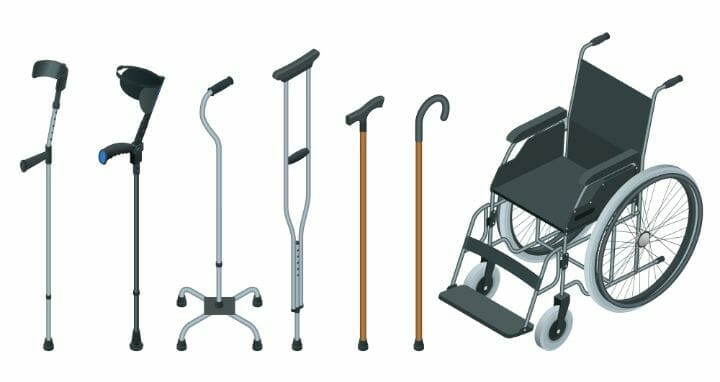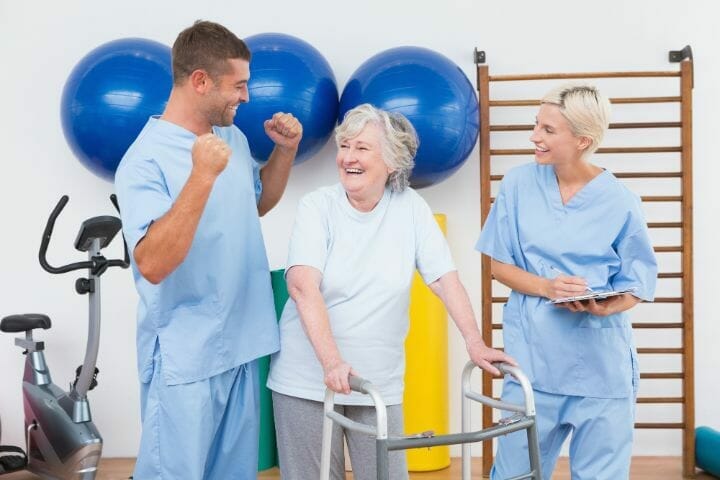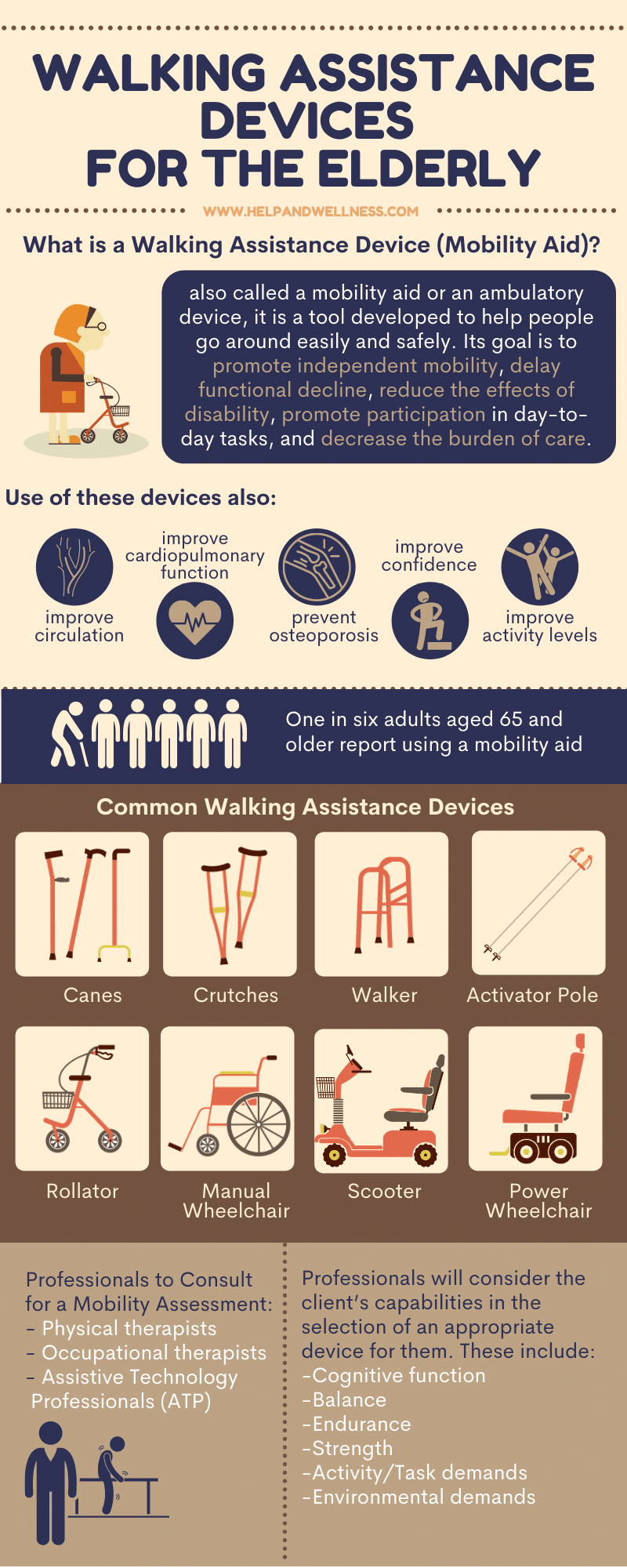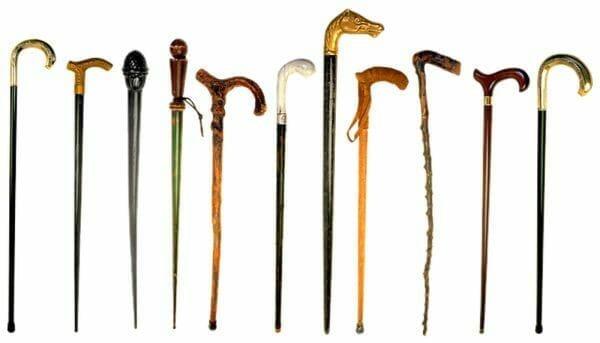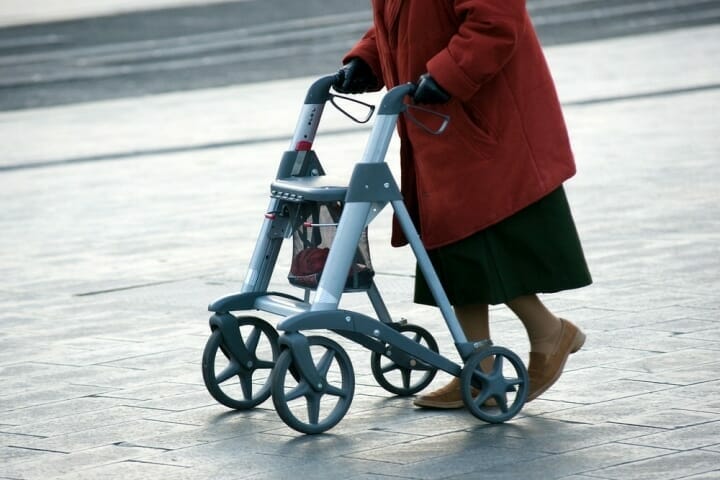The ability to walk and move about is a significant part of independence. However, as a person grows older, mobility becomes more challenging.
Contents
Both aging and other health conditions (e.g., hip surgery, stroke) place seniors at a greater risk for falls. There’s no wonder why there are a lot of walking assistance devices developed to support and ensure safe mobility for the elderly.
What Is a Walking Assistance Device (Mobility Aid)?
A walking assistance device called a mobility aid or an ambulatory device is a tool developed to help people go around easily and safely. It allows people to enjoy more freedom and independence as they do their daily living.
Its goal is to promote independent mobility, delay functional decline, reduce the effects of disability, promote participation in day-to-day tasks, and decrease the burden of care.
Mobility aids help improve a person’s mobility by:
- redistributing weight to other body parts (e.g., when a limb is painful or should not bear weight)
- improve stability and balance by providing an adequate base of support
- aiding in propulsion, reducing the effort or strength required to move
- compensating for injury or weakness
The use of these devices also affect circulation, cardiopulmonary function, and may even prevent osteoporosis. In addition, studies show that persons who use a mobility aid report increased confidence and feelings of safety, which further increase their participation in activities1 and activity levels.
Who Can Use Mobility Aids?
Anybody who needs aid and support to move around can use a mobility aid. Some may only need it temporarily, including people who have undergone surgery. Some may need it long term to compensate for poor balance, lower extremity weakness, and poor endurance.
While it is for everyone, studies show that the elderly population uses it the most. The 2000 report2 on mobility device use in the United States found that the proportion of mobility aid use increases sharply with age, with or without a perceived disability.
Also, an unpublished NHIS data in 2013, as cited in a report done by CDC3 noted that one in six adults (16.9%) aged 65 and older report using a mobility aid.
On the other hand, some studies found that mobility aid users are at a greater risk for falls. This is often because most users have not received any instruction on the proper use of these devices.
Worse, their devices are inappropriate for their needs, have wrong measurements, or are damaged. These devices put their safety at risk rather than ensuring it.
You may also like How Much Do Crutches Cost?
How Do I Get a Walking Assistance Device for Myself?
So, while it is pretty easy to just purchase one on your own or be given one by a friend or loved one, a wrong device can negatively affect one’s stability and balance, cause problems in posture, and even cause pain.
Since these assistive devices come in all shapes and sizes, professional advice is vital to select the best equipment and achieve a proper fit.
This is especially true for customizable equipment and higher-end devices. The best thing to do first is to set an appointment with a doctor for an assessment.
Doctors will then refer you to professionals who will do a mobility assessment to check their gait pattern, balance, and other skills.
These professionals include:
- Physical therapists;
- Occupational therapists; and,
- Assistive Technology Professionals (ATP)
Aside from their determined needs, assistive devices also pose significant demands on the user. Professionals will consider the client’s capabilities in the selection of an appropriate device for them. These include a client’s:
- Cognitive function
- Balance
- Endurance
- Strength
- Activity/Task demands
- Environmental demands
You may also like How to Prevent Stooping in Old Age?
8 Common Walking Assistance Devices for the Elderly
Below is a detailed list of common walking assistance devices used by the elderly. These are further divided into aids for the ambulatory and non-ambulatory elderly.
For the ambulatory elderly:
Canes
Canes are the most common walking assistance devices used by seniors. Some canes are made of solid material, usually wood or steel. Hence, their height, which is generally 36 inches, cannot be adjusted. Other types however, especially the aluminum types, can be adjusted.
Canes are most beneficial for people who have minimal problems with balance, those who need support in weight bearing, and those whose one leg is weaker.
Canes can support up to one-fourth of a user’s total body weight. Since these types of mobility aid support a person’s body weight and transfer the load from the legs to the hands, they require hand and arm strength.
It may not be the best option for those with weak upper bodies.
Canes come in various types. Standard or straight canes are single-point canes. Other canes have three (tripod canes) or four legs (quad canes or quadropod canes).
Tripod and quad canes can stand on their own and offer better support and stability than standard canes. However, these are also heavier.
Canes come in various materials (steel, aluminum, or wood), handles (C-cane, T-cane or horizontal, and offset), and grips (large grips, foam grips, and gel grips).
To know if the cane is of the appropriate height, have the person stand erect while wearing his preferred shoes. The cane’s topmost part should be at the same height with the crease of his wrist.
When holding the cane, the person’s elbow should flex at around 15-20 degrees, with the cane perpendicular to the floor.
Crutches
Crutches are not commonly used by the elderly adult as a long-term walking assistance device. It is usually bulky and challenging to use than canes. They are typically utilized temporarily after a leg injury or surgery. They also require coordination, endurance, and strength.
Crutches come in various forms. Standard (axillary) crutches are inexpensive and can offload the lower extremities. However, this may cause an injury to the nerves or arteries in the armpit area.
Lofstrand or forearm crutches have cuffs around the arm. Because of this, the hands can be used without dropping the crutches. Platform crutches provide support to the forearm, allowing the forearm to bear the weight instead of the hands.
Walkers
Walkers are best for people with balance problems and lower extremity weakness. Compared to canes and crutches, walkers provide the most stability since they offer wider contact to the ground.
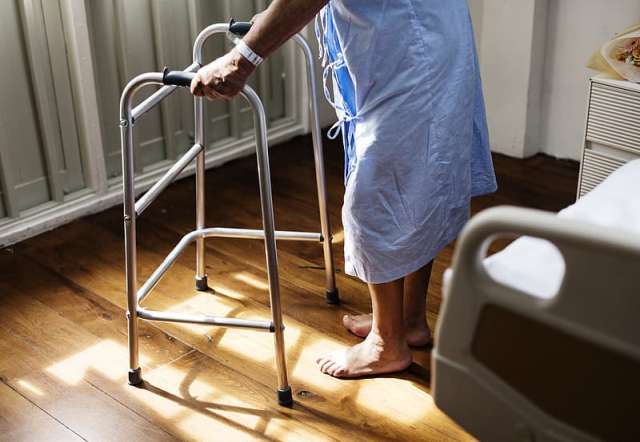
They provide stability by increasing the person’s base of support and supporting his weight. However, they are more challenging to maneuver than canes and are difficult to use when navigating stairs.
Most walkers are foldable. Standard walkers are the most stable but require more upper extremity strength from the user since they have to be lifted off the ground with each step.
Two-wheeled walkers or front-wheeled walkers are less stable than standard types but are better for those who do not have enough strength to lift standards walkers.
While bulkier than canes and crutches, walkers are lightweight and may even weigh less than crutches.
Correct walker height is measured similarly to canes. When held by a person, his elbow should bend at 15-20 degrees.
Rollators
Rollators can be three or four-wheeled. They are most suited for those with good cognitive functioning, slight weakness, and minimal problems with stability.
These usually come with seats, baskets, and handbrakes but have to be used with caution. While easy to propel, rollators are not suitable for those with significant balance problems or cognitive impairments since rollators can roll forward and cause falls.
Thus, brakes should always be on and must be placed beside a steady surface if they decide to sit on it. They are also bulkier and heavier than standard walkers.
Activator Pole
Activator poles or walking poles are like walking sticks used on both hands. Since they are lightweight, they allow normal arm swing and gait pattern, with the wrist kept in a neutral position.
These are popular among elderly people with active lifestyles. Having said this, this is more suitable for elderly individuals who have good physical functioning and have minimal balance and stability issues.
You may also like Best Cane for Balance Problems
For Non-Ambulatory Elderly
Manual Wheelchairs
Like the other devices mentioned above, wheelchairs come in various types and designs. They may be used temporarily (especially after surgery or during a recovery) or long term.
They can also be used when traveling to make sure that the elderly will not get exhausted. Transport or travel wheelchairs are most suitable for such use. They have small rear wheels, making them very light and portable.
Another option would be the use of standard wheelchairs. They can be self-propelled or propelled by an attendant or a caregiver. Standard wheelchairs can be regular, lightweight, ultra-lightweight, and heavy-duty, depending on the user’s weight.
While most are foldable, standard wheelchairs have limited adjustability and may not be that comfortable for long term use.
In general, wheelchairs are most suited for seniors who lack the balance and endurance to stand and do not have enough upper extremity strength to manage other mobility devices.
However, elderly people who want to stay with enough upper extremity strength and good tactile sensation can be encouraged to self-propel.
If a wheelchair is projected for long term use, it is best to go for a customized one. Aside from being customized to the senior’s measurements, wheelchairs can be customized to suit the senior’s needs.
You may add accessories to provide more significant support and offer more comfort to the user.
Power Wheelchair
Power wheelchairs may be a good option for those who want to stay independent yet do not have the endurance and strength to propel a manual wheelchair.
Power wheelchairs can be maneuvered using joystick controls or alternative controls such as chin control, head control, or sip-and-puff systems.
Scooters
Scooters are suitable for seniors with good sitting balance and endurance and some upper extremity strength since hands should be extended forward for a period of time. They are ideal for those who can still walk but cannot do so for long distances.
Since scooters require their users to use brakes, control the speed, and steer, it is not suitable for elderly people with dexterity problems and hand movements.
They come in various designs. There are types for indoor and outdoor use, and some are lightweight while others are heavy-duty. Scooters can come with three-wheels or four-wheels. Many scooter users report satisfaction in their choice of mobility aid.
You may also like How to Use a Cane for Balance?
A Final Word
When it comes to aiding the elderly to move about independently, there are many assistive walking devices to choose from.
Seeking professional advice is essential to be equipped with the necessary information about the senior’s mobility needs, skills, and condition and match them with the most suitable device available.
This will ensure that you don’t only get the best out of the device – you also ensure that the senior is safe while being independent for as long as possible.
References:
- https://pubmed.ncbi.nlm.nih.gov/19774301/
- https://files.eric.ed.gov/fulltext/ED444296.pdf
- https://www.ncbi.nlm.nih.gov/pmc/articles/PMC6464113/
- https://www.sciencedirect.com/science/article/pii/S2214140515000201

